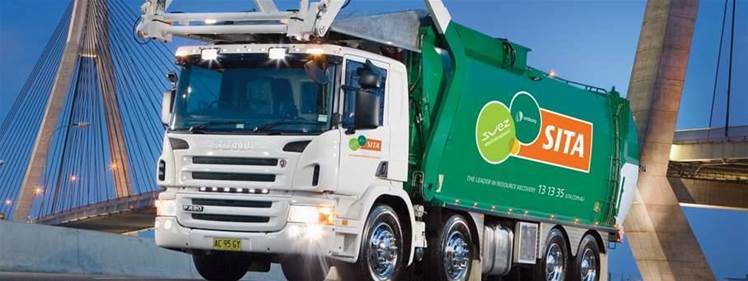Waste management company SITA has decommissioned its Sydney data centre, migrating all of its applications to Telstra in a painless shift that took just a weekend.

SITA had built a new internal data centre in 2010 prior to the appointment of Michael Salas as CIO in late 2011.
Salas, a former executive at Perpetual and Ticketek, has spent the intervening years moving staff off “the plumbing” in order to focus on the delivery of business applications.
The company is preparing for a major SAP overhaul that will require most of the IT team’s energy for several years.
“This project was about future proofing,” Salas told iTnews. “It was about future agility – it’s so I'm not having conversations with people about something [as banal] as running out of storage.
“It was around recognising that we don't have the right capabilities to manage data centres ourselves, even though we have our own data centre.
“The case for change was less about saving costs and more about risk mitigation. We had a DR capability that was not right for a business of our size in terms of Recovery Point Objective and Recovery Time Objective.”
After many months of careful planning, SITA dropped the bulk of its data onto new equipment hosted in Telstra’s facility on physical media, before using Veeam’s replication technology to sync any changes from that point on.
The company then moved all of its x86-based virtualised applications over the network to be hosted on an Infrastructure-as-a-Service platform offered by Telstra, while third party migration specialists Computer Merchants set up a new hardware stack at a Telstra co-location facility for the hosting of SITA’s AS400-based applications.
SITA engineers finished the job with some network routing changes to to recognise the Telstra-hosted systems as production. For the most part, the applications loaded up without the need for any tweaking.
Salas reports that the migration “went really smoothly, with no impact to the business.”
The CIO said he was lucky to have landed great executive sponsorship to convince users across the company to log-in over the weekend, run reports and verify that systems were behaving as they should.
“That's something I thought would be one of the hardest things for this project, because the business is not getting anything new,” Salas noted. “It's a risk mitigation project.
“But we had a good team there to communicate to the business. The way we explained it – if we get a plumber in to fix the tap, you always turn it on and off before he leaves. So we simply ask that you log on and off, run a couple of reports and check that everything is alright.”
Cloud as stopgap?
Curiously, many CIOs would view managed IT services as temporary step to moving applications to public clouds. But in SITA’s case, it turns out to be the opposite.
Using Telstra’s IaaS service, SITA’s IT team have the same control over virtual machines as they would have if the data centre still sat next door in Rhodes. It takes advantage of SITA’s existing investment in skills and licenses for VMware's flavour of x86 virtualisation. That goes part of the way to explaining why the project was far less painfull than a complete applications overhaul for shifting to a public cloud.
But while engineers no longer physically grapple with hardware, air conditioning systems or back-up tapes, they nonetheless continue to work at the VM layer rather than further up the stack. Moves, adds, changes, and disaster recovery is still SITA IT’s responsibility, but Salas sees a future where those roles belong to Telstra, while his own team focuses on applications and data.
“Moving from an organisation that did everything in house to using something like Amazon is a big step,” Salas said. “To re-architect systems to put on Amazon would have taken a lot longer. Telstra have similar technology to what we were using, so the cutover was more seamless.”
But SITA won’t be using Telstra’s IaaS product for long.
As Salas’ applications overhaul project takes shape, he is looking to shift all applications – including those hosted on Telstra’s IaaS product and all new systems – onto a Telstra managed service.
Under a Telstra managed service, it will be the responsibility of Telstra staff to offer tighter failover and failback windows.
“We didn't go for a Telstra-managed OS initially as that would have blown out the timelines,” Salas said.
It would have taken longer, he said, because in order to drive value out of the deal, Telstra would have wanted to install their standard OS, requiring a reinstall of all SITA systems.
“Strategically, where we want to go is for Telstra to manage the patching and monitoring, etc, but to reduce the risk to the business we moved to IaaS first,” he said.
Salas has had to work hard on the Telstra relationship to ensure SITA’s future is in good hands.
“With Telstra, just like working with any other vendor, there are challenges at the beginning as you move from interacting from the sales team to the delivery team,” he said.
“To Telstra’s credit, we started off rocky and they course corrected. They put the right people and resources in and were able to turn around the perception of Telstra in our organisation – from ‘just another vendor’ to someone we can see as a business partner.
“It was Telstra and SITA in that war room while we were cutting systems across, testing them and resolving issues.”
Salas hopes that the migration will be the last of the “plumbing” work before the waste management company embarks on the next phase of its strategy – an overhaul of its back office, operational and customer facing systems.
iTnews is hosting a data centre migration roundtable on September 10 in Sydney. If you're looking to migrate applications to a new facility, or have recently done so, drop us a line - there are a handful of seats left.


























